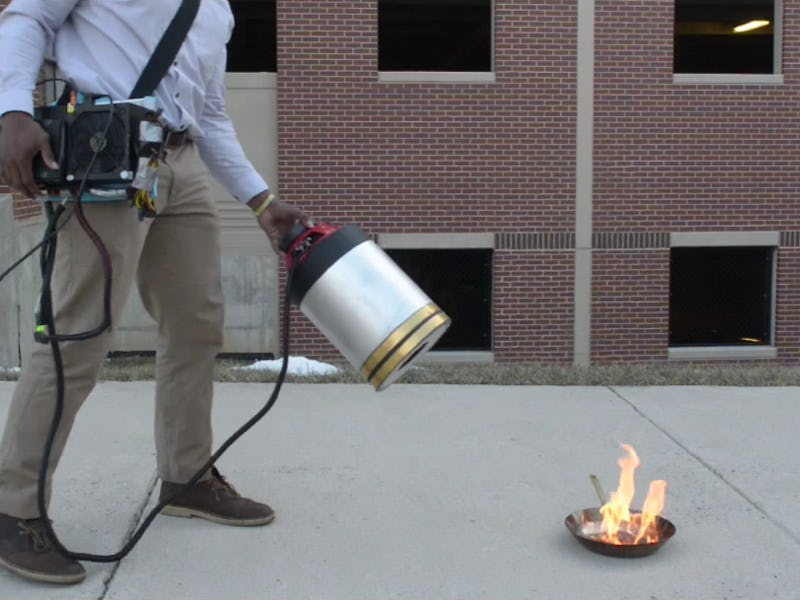Using Sound to Extinguish Forest Fires Requires Super Deep Bass
Being all about that bass could save firefighters' lives.

Putting out forest fires is hard and getting harder as the West dries up. Planes fold like paper under excessive water weight and firefighters too often find themselves trapped. Arguments about the future of blaze prevention and containment are escalating and this time — perhaps only this time — being louder might make the technologists looking to solve this problem right.
Electrical engineering students at George Mason University have created a non-literally groundbreaking extinguisher that uses sound waves to quell flames. Earlier this year, college seniors Seth Robertson and Viet Tran unveiled their invention, a mash-up between a subwoofer and a popcorn can. In a demo video, Robertson pointed the hand-held speaker’s mouth at a flaming pan and flicked a switch. Out growled a low, consistent rumble, which blew the fire out like a birthday candle. Yes, a single extinguisher could be useful in a kitchen, but multiplied and deployed strategically, these speakers could become a killer app for killing fires.
Scientists have been floating this idea around for years. Back in 1905, a German physicist Heinrich Rubens succeeded in manipulating the height of flames by adjusting the frequency of sound pumped beneath the gas fueling them. In 2011, DARPA made a large-scale extinguisher as part of its “Instant Fire Suppressor” program based on the same principle. For a fire to continually burn, it needs oxygen, heat, and fuel. The tinder left in the wake of climate change supplies the latter. Nature provides the rest. The mini-extinguisher designed by Robertson and Tran disrupts the natural combustion process by pulsing waves of sound along the bottom layer of the flames. At superbass-y levels, these sound waves push around the oxygen until there isn’t enough of it around to combust.
The other obvious advantage here is that sound waves are less destructive than water and considerably more predictable. They also dissipate instead of speeding erosion.
The best firefighting frequencies, the students told The Washington Post, fall within the range of 30-60 hertz. Trebly frequencies of 20,000 to 30,000 hertz just don’t do the trick. Because bass lines in music aren’t consistent enough, music isn’t particularly good for extinguishing flames.
That’s not to say it’s not worth a try. Entire genres of music are dedicated to glorifying bass lines that are at least consistent enough to make flames dance for their life. Here’s a fire-killing starter kit that hits at that 60-hz cutoff: